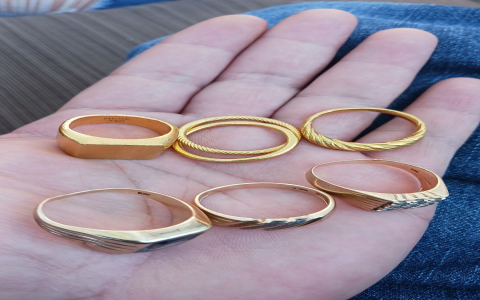Okay, so today I’m gonna spill the beans on my little gold adventure – figuring out the real difference between 14k and 24k gold. I mean, we all hear the terms, but what does it actually mean, right?
It all started when my grandma gave me this old necklace. She told me it was “real gold,” but I noticed it was way less shiny than my friend’s new gold ring. That got me thinking… time to do some digging!
First thing I did? Hit the internet, of course. I started reading about karats and what they mean. Basically, 24k gold is supposed to be pure gold – like 99.9% or something crazy high. Then 14k gold is a mix – gold and other metals like copper or silver. It’s like a gold alloy, if that makes sense.
Next up, I wanted to see this with my own eyes. I went to a local jewelry store. I straight up asked the guy behind the counter, “What’s the big deal with 14k vs. 24k?” He was pretty cool and explained that 24k is super soft. You can’t really make jewelry out of it because it’ll bend and scratch like crazy. 14k is tougher because of the other metals mixed in.
Then, I asked him to show me some examples. He pulled out a 24k gold bar. Man, that thing was yellow! Really rich and deep. Then he showed me a 14k ring. It was still gold-colored, but definitely a lighter shade. It felt way sturdier too, like it could actually handle being worn every day.
After the jewelry store, I decided to do a little “scratch test” of my own (don’t tell my grandma!). I took a piece of ceramic tile (the back of one, so it’s unglazed). I gently scratched the clasp of my necklace on it. It left a very faint gold streak. Then I scratched a known piece of 18k gold jewelry I had. The streak was a bit brighter.
I also tried the “magnet test” that I read about online. Pure gold isn’t magnetic. Neither was my necklace or the 18k piece. Good sign!
Here’s what I learned:
- Color: 24k is a deep, almost orange-y yellow. 14k is lighter, more of a traditional “gold” color.
- Durability: 14k is way more durable for everyday wear. 24k is too soft.
- Price: 24k is more expensive per gram because it’s purer.
- Scratch Test: A faint gold streak on ceramic can indicate real gold, but it doesn’t tell you the karat.
- Magnet Test: Gold isn’t magnetic, but this only tells you if there are other magnetic metals present.
So, what’s the takeaway? 24k is cool, but 14k is probably better for most jewelry. It’s a good balance of gold content and durability. Plus, it usually costs less!
In the end, I still don’t know exactly what karat my grandma’s necklace is without getting it professionally tested, but I’ve got a much better understanding of the difference between 14k and 24k gold. And that’s what matters!
